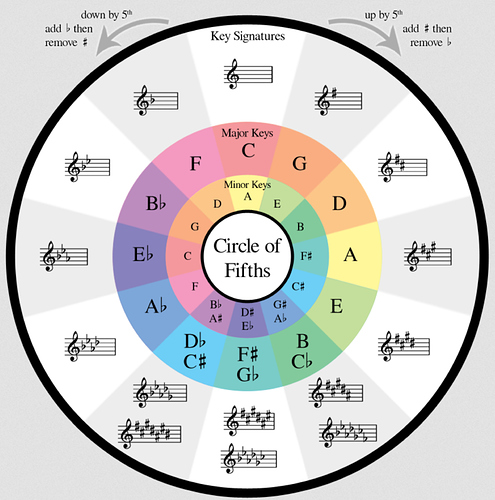The only flashcard I’d write both ways is F#/Gb. I don’t think you’re going to encounter music written in C# major in the wild.
The situation with orchestras or concert bands is actually both more and less strange than that. All instruments in the same key will receive the same key signature (unless the piece is some weird experimental something). By “in the same key” I mean something you may not know about, though.
You may know that the bass is a transcribing instrument, in the sense that, if you and the piano player were to play from the same piece of sheet music, your notes would come out an octave lower. Well, some other instruments are also transcribing, but not by an octave.
In order for a flute and an alto saxophone to both play the note Eb, the flute will play an Eb and the saxophone will play a C. By “play a C,” I mean, play the note on the saxophone that saxophone players call a C, and that is written as a C in saxophone music. The actual note that comes out is an Eb. This is why you’ll sometimes see a sax called an “Eb alto sax.”
In the same sense, clarinets, tenor saxes, baritone, and trumpets are in Bb (because what they call a Bb is really a C).
You might wonder what the heck is going on. The reason the instruments are in different keys is that it allows each family of instruments to have the same fingerings across the family, and all of the woodwinds (except the double reeds like oboes and bassoon) to have basically the same fingerings. So if I switch from an alto sax to a tenor sax, I can still read the tenor sax sheet music and play the notes the same way, and don’t have to learn a whole new system. Or if I switch from trumpet to, I don’t know, tuba, the fingerings will be the same.
Flutes and violins are both in the key of C. And their music will always be written the same. When I say flutes are more comfortable playing in flats, I don’t mean that they would get their music in Eb and violins would get it in D#. Everyone would get Eb. I just mean that if you were writing a piece for a flute choir, you might be more likely to put it in a key with flats in the first place. Flutists can certainly play in keys like A, E, and B, it’s just not their bread and butter.



